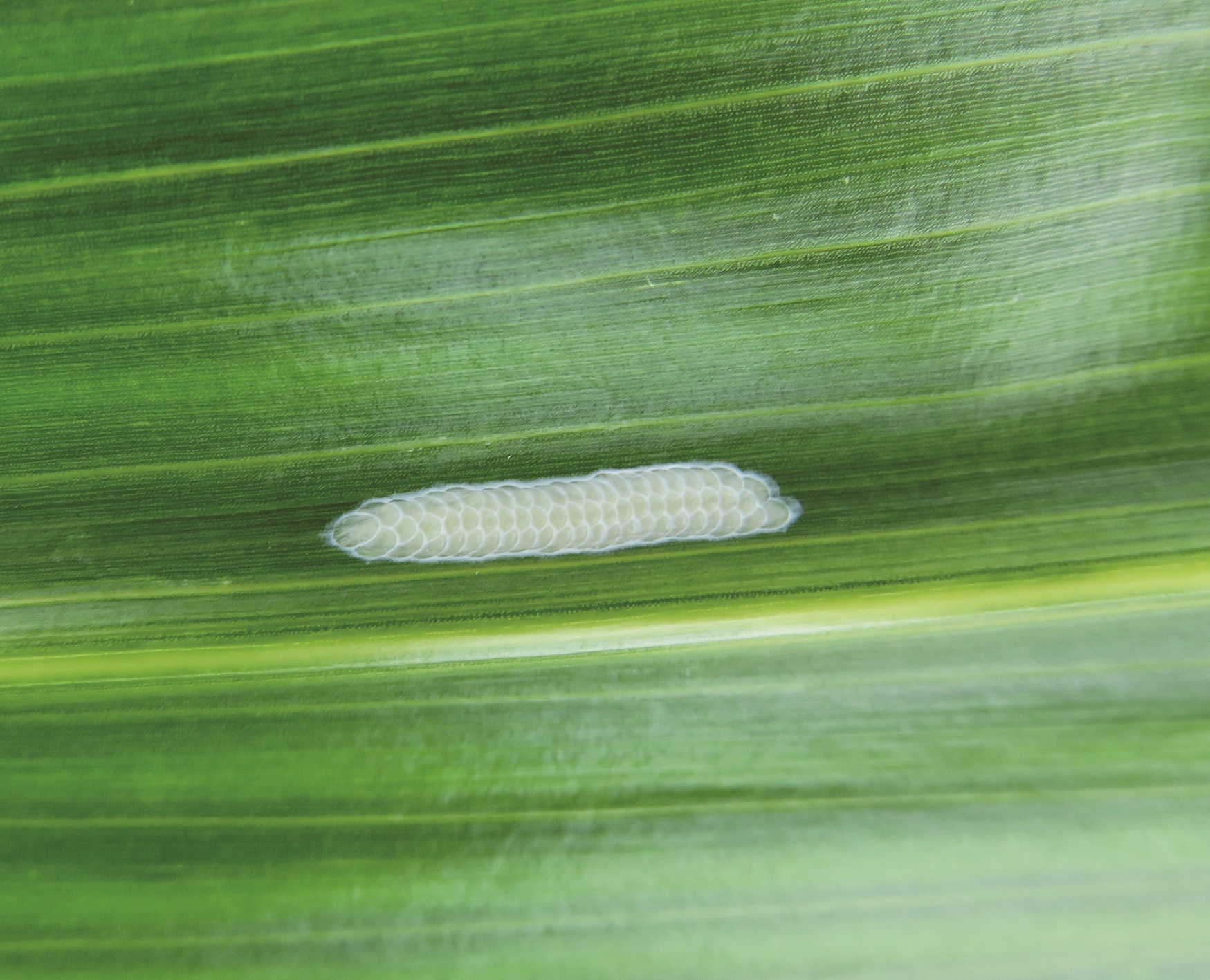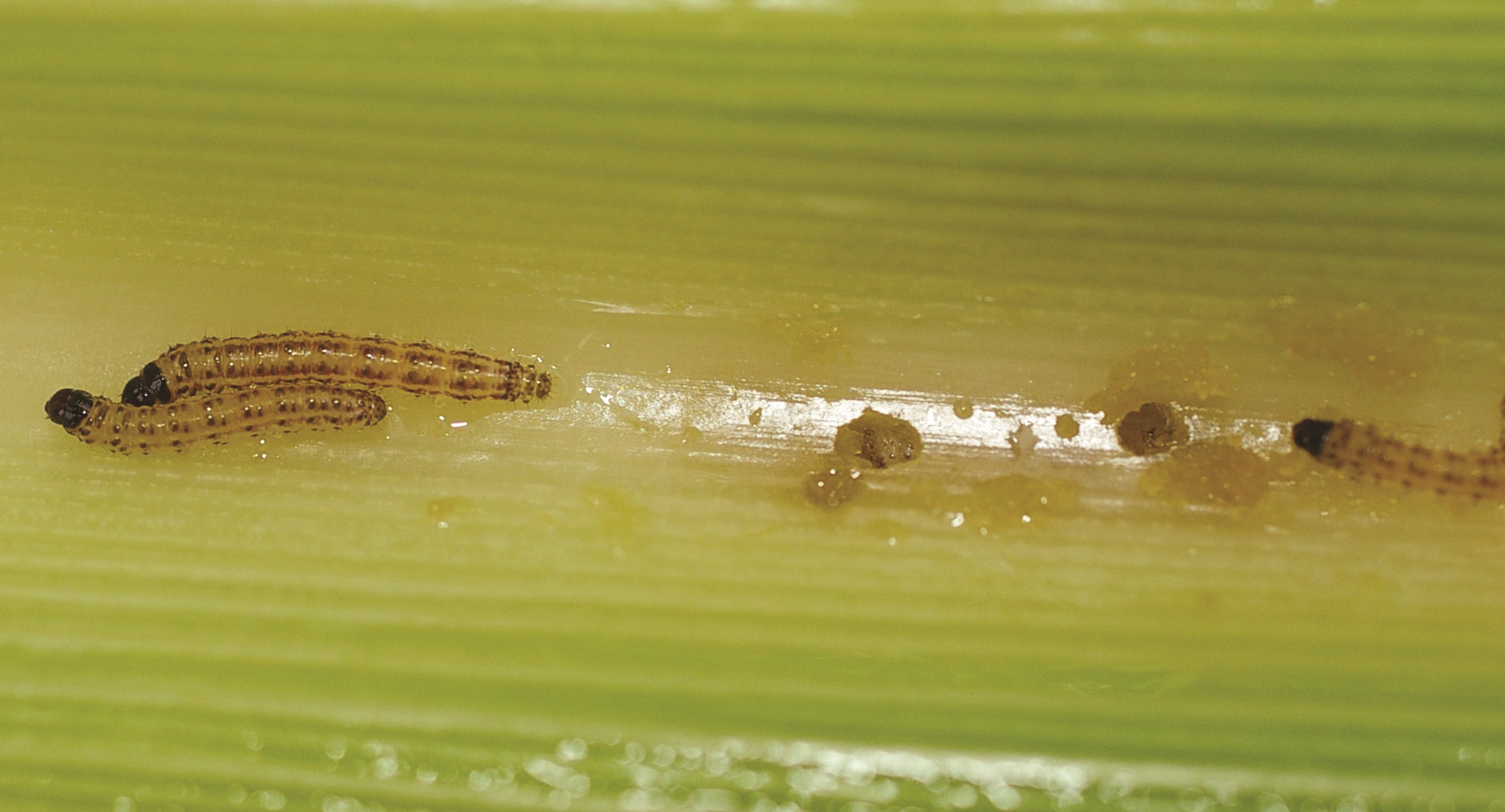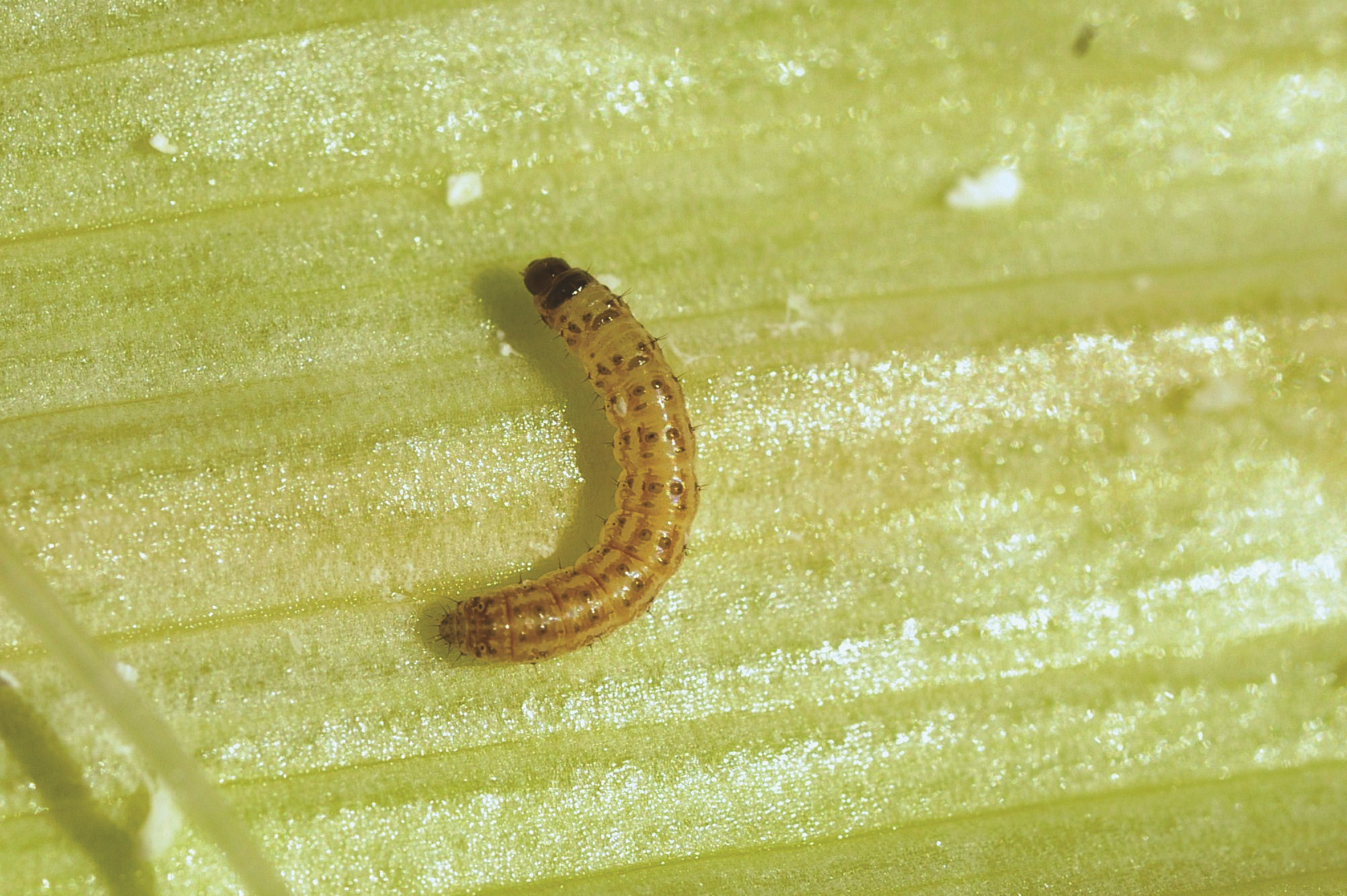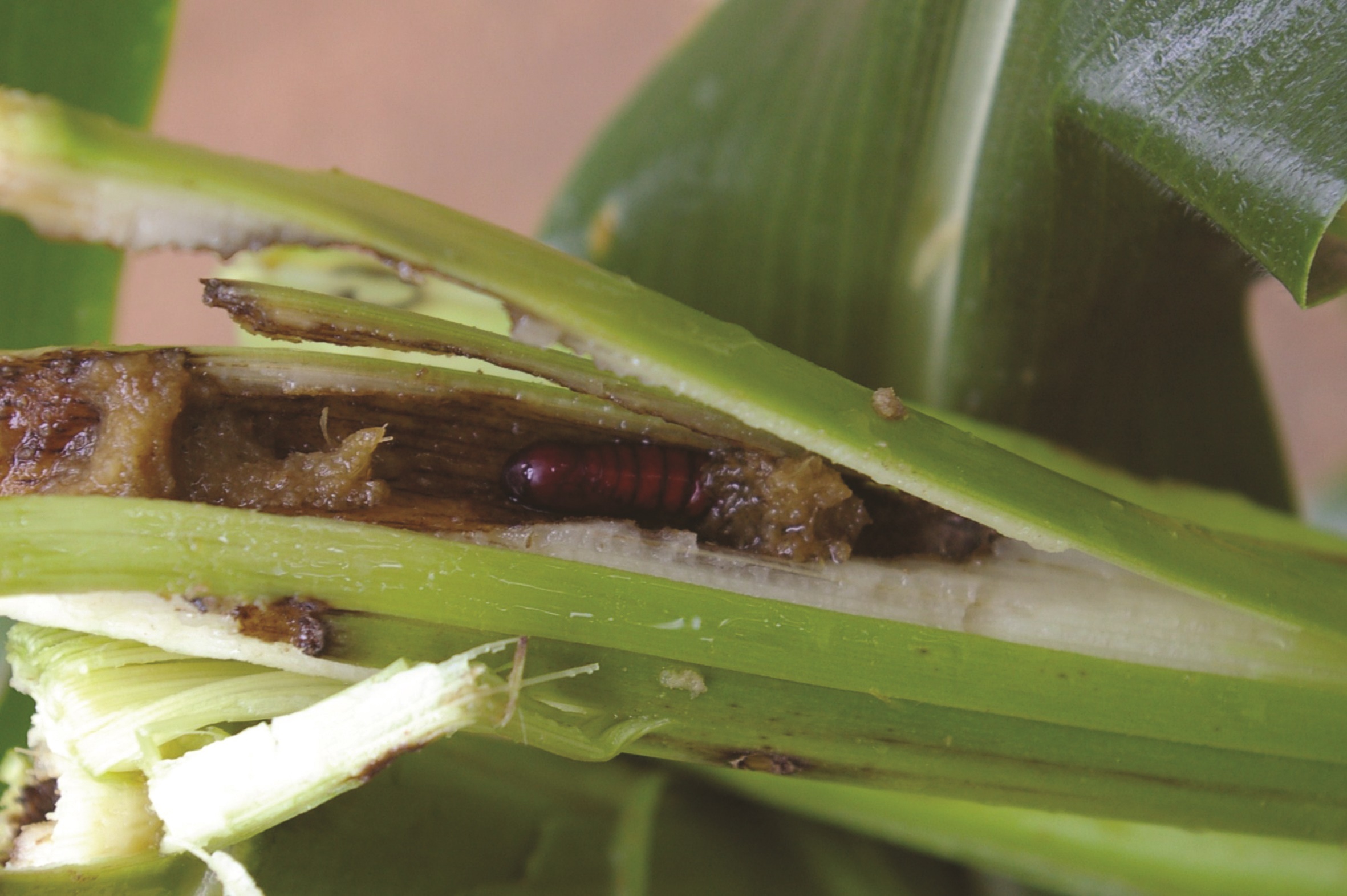November 2022
It is important to be able to identify anything that can damage your crops. Lepidopteran pests such as the Chilo borer can cause huge damage in maize fields, which will cause substantial yield losses. Early identification can prevent or minimise this.
This Chilo borer occurs mainly in the maize triangle and low-lying warmer areas of Mpumalanga, Limpopo, Springbuck flats, Makatini flats and areas in KwaZulu-Natal. The primary host of this pest is sorghum, with maize being secondary.
The life cycle of the Chilo borer is much shorter and is completed within three to four weeks. Moths emerge in September, with females laying egg batches (up to 500 eggs) on the upper and underside of young seedling leaves. Egg batches are white, oval, flat and overlapping, similar to roof tiles, and hatch after five to seven days.
Larvae are creamy white in colour with characteristic dark spots along the back, which is why Chilo borer is also known as the spotted stemborer. Emerging larvae crawl towards the whorl and spread to nearby plants on thin silk threads. Larval feeding lasts three to four weeks in the whorl where they feed on young rolled up leaves, before leaving this area to penetrate the stem for pupation.
Larvae overwinter in plant stubbles and as temperatures increase after winter, moths emerge after a short five to seven day pupal period.
Due to the shorter duration of the larval stage, less feeding and shorter life cycle of Chilo borer, it is regarded as a less serious pest for maize when compared to African stalk borer.
DAMAGE
The damage caused by the chilo borer includes small holes or ‘windows’ in the leaves as they grow out due to larval feeding in the whorl as well as extensive tunnelling in stems and maize cobs by older larvae. Damage by the Chilo borer is very similar to that of the African stalk borer.

Chilo eggs.

Chilo larvae feeding in whorl and tunnelling in midrib.

Characteristic spots on Chilo larvae.

Larvae pupate in maize stems.
Publication: November 2022
Section: Pula/Imvula
Author: CROPLIFE SOUTH AFRICA